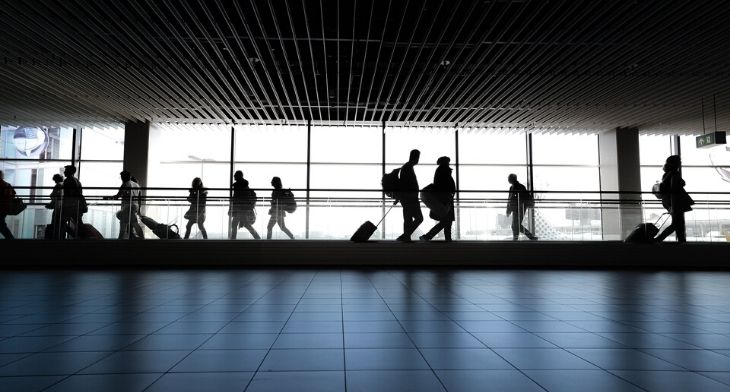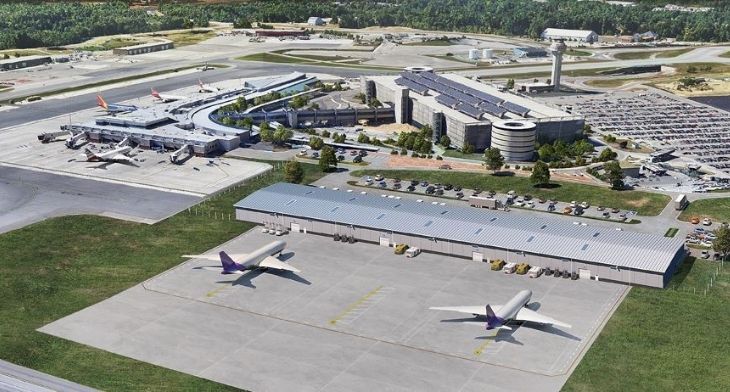


US Telecom providers Verizon and AT&T have agreed to temporarily limit 5G service around some airports following warnings from airports and airlines that the rollout could cause severe disruption to air transport services.
The 5G C-Band service being rolled out sits next to frequencies used by key instruments on modern aircraft and the Federal Aviation Administration (FAA) has warned it could interfere with those systems, including radio altimeters.
A statement from AT&T read: “At our sole discretion we have voluntarily agreed to temporarily defer turning on a limited number of towers around certain airport runways as we continue to work with the aviation industry and the FAA to provide further information about our 5G deployment, since they have not utilised the two years they’ve had to responsibly plan for this deployment.”
Both AT&T and Verizon have expressed their frustration that FAA and the nation’s airlines have not been able to fully resolve navigating 5G around airports, despite it being “safe and fully operational in more than 40 other countries”.
The move to temporarily delay the rollout of 5G services near a limited number of towers follows various calls from industry leaders including the Regional Airline Association’s (RAA’s) CEO and President, Faye Malarkey Black, to sound the alarm to senior government officials that the issue of potential interference could severely impact flights and the supply chain.
Declaring that RAA has been a long-time participant and supporter of safe integration of 5G in the US, Malarkey Black said that despite engaging alongside industry peers and government regulators toward the objective of protecting safe and reliable air service for all passengers no matter which airport they travel to, this is unfortunately not what was awaiting travellers on 19 January.
Earlier in January, RAA learned of an 11th hour compromise between the FAA and telecom companies, which was characterised as lessening the propensity of signal interference to disrupt the National Airspace System.
In a statement Malarkey Black said: “The proposed mitigations were limited to just 50 airports, mostly large hubs. RAA was gravely concerned with both the process, which failed to consult regional airlines in advance of the deal, as well as the outcome, which insufficiently addressed harmful interference at larger airports and failed altogether to mitigate impacts elsewhere. The resulting delays, dysfunction and chaos in our nation’s airspace will be experienced by nearly all passengers in bad weather but will be dramatically amplified for those traveling to smaller communities.”
She added that even at these airports with mitigations, the FAA must issue special directives to ensure safety until the agency can receive and approve alternative methods of compliance (AMOCs) for safe use of low-visibility approach procedures.
“Unfortunately, FAA has issued a list of approved AMOCs for aircraft to operate at certain airports after January 19 that does not include any regional aircraft,” said Malarkey Black. “Further, the agency surely understands that for some aircraft, AMOCs may not be feasible at all. This is unfortunate, given that regional airlines provide the only source of scheduled, commercial airline service to 66% of the nation’s commercially served airports and directly serve 94% of the nation’s commercially served airports, while major airlines directly serve just 34% of these airports directly.”
Underlining that the RAA appreciates the FAA’s efforts to mitigate safety and operational challenges and its repeated warnings of unsafe interference, Malarkey Black argued that the Federal Communications Commission should never have allowed a sale of spectrum until concerns over harmful potential implications to safe and reliable air transportation were fully understood and comprehensively addressed.
“Fortunately, it is never too late to do the right thing,” she said. “Hard as it may be to reopen dialogue, it is critical that both agencies and their regulated parties do so. RAA further urges federal regulators and the telecommunications industry to pause the rollout of 5G until all airports are protected from interference. Proposed mitigations creating two tiers of safety and reliability with partial mitigations at 50 airports and no remedies elsewhere are flatly unacceptable. Until such time as the FAA can safely clear all aircraft serving all airports and protect all passengers from delays and chaos, FCC must continue to delay rollout of 5G around airports. To do anything less is malpractice.”






